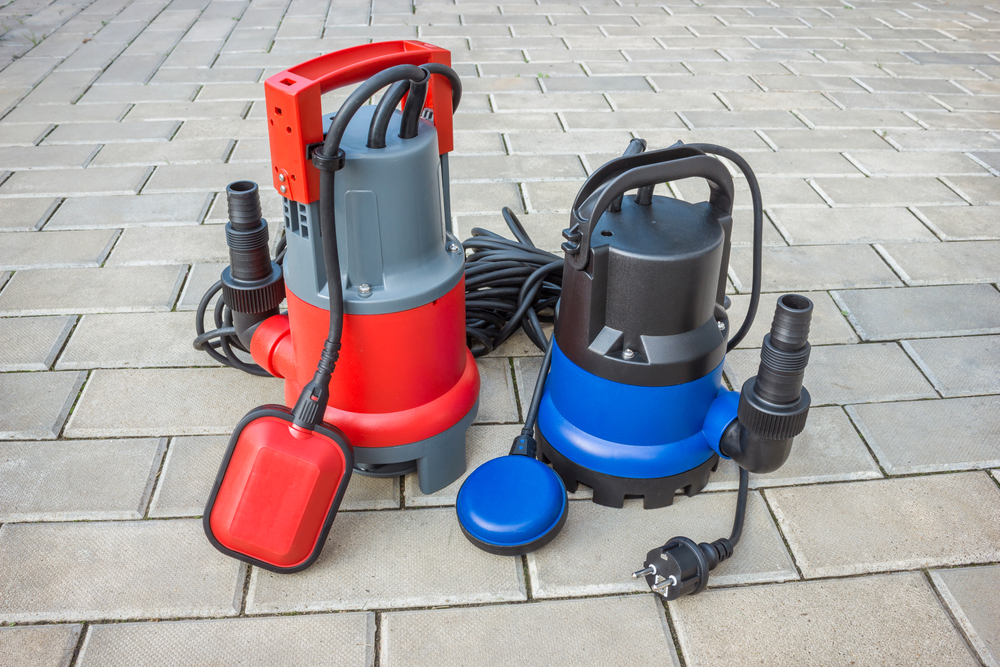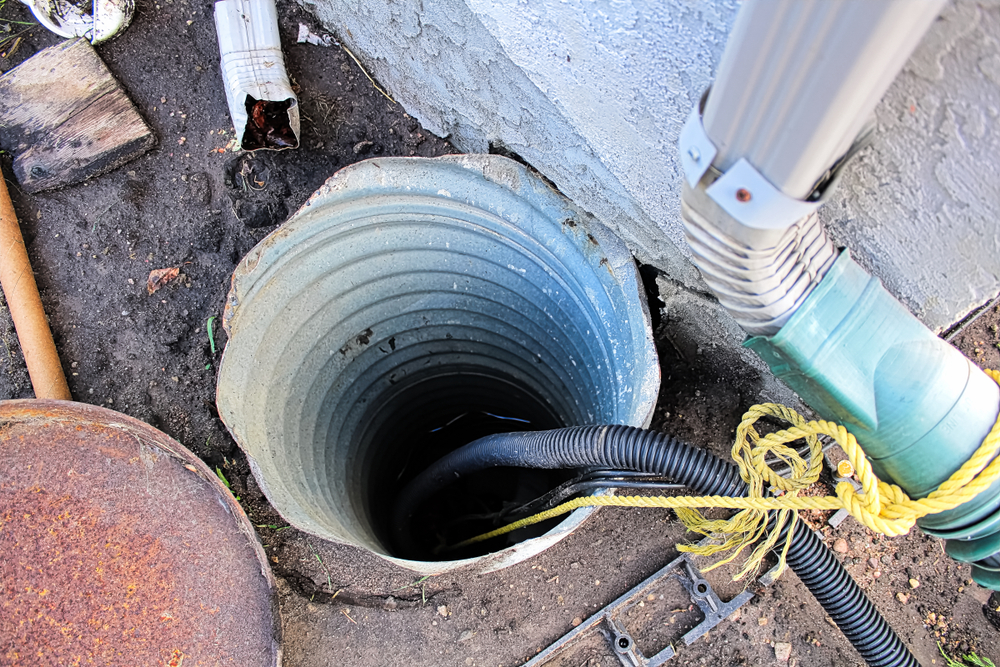Why Do You Need a Sump Pump and Pit?

Sep
Do you live in a low-lying or flood-prone area of Sydney or Australia?
Do you have a basement or lower-ground floor that could be susceptible to flooding and water damage?
If you answered yes to both of these questions, this is a recipe for potential disaster. Heavy rainfalls are only becoming more common in Australia, and your property needs to be prepared to combat flood risks.
Luckily, you can prevent flooding and water damage with a sump pump and a sump pit. The combination of a sump pump and a sump pit is the best form of defence against basement flooding, and that’s why every vulnerable property needs them!
In this article, we’re going to walk you through everything you need to know about pump and pit solutions, including:
- What is a sump pump and what is a sump pit?
- When do I need a sump pump and pit?
- Automatic vs manual sump pumps.
- Installation and maintenance requirements.
The Ultimate Guide to Sump Pumps and Sump Pits in Australia
What Is A Sump Pump and Pit?

Sump pumps and sump pits work together to drain excess water from your property and prevent flooding and associated property damage.
Typically measuring half a metre wide and half a metre deep, a sump pit is a small pit, usually located in the basement or other low-lying areas of the home, such as lower ground living spaces or crawl spaces. These pits are lined with gravel and designed to collect groundwater from the soil and water from your drainage system. By containing water in the sump pit, you prevent it from gathering in your basement instead. Sump pits are sometimes called sump basins.
A sump pump collects the water from the pit and safely drains it away from your property. Sump pumps are submersible, meaning they are designed to function when fully submerged in water.
Advantages of Sump Pumps and Sump Pits
- Pump and pit solutions are discreet and compact. They don’t take up much space and they will barely be visible to the eye.
- Sump pumps are quiet and efficient. They can barely be heard when they are draining water, and their large, heavy-duty shafts allow them to clear large amounts of water after heavy rainfall.
- The system is safe and easy to care for. There is basically no risk of overheating your sump pump, and the closed system keeps it safe from contaminants. If something were to go wrong, the location of the pump and pit ensures your property is not at risk.
Does My Property Need a Sump Pit and a Sump Pump?
The number one reason your property needs a sump pit and a sump pump is if you are in an area that is susceptible to flooding, particularly if your property is built in an area that is below the water table. If your property is at any risk of flooding, then pump and pit solutions are a great way to protect your lower levels.
As well as flood-prone areas, any home that has poor drainage at the foundations should consider a sump pit and sump pump for additional protection.
If any part of the property is below the sewer line, a sewer sump pump can direct blackwater and greywater waste back to the sewer line and away from your property.
As well as basements and sewers, sump pumps are occasionally installed in dry wells and storm drains.
A licensed and registered plumber can recommend whether sump pits and pumps are suitable for you.
When Do I Need A Pump and Pit? A Checklist!
Still unsure if you need a pump and pit? If you match with any item on this checklist, pump and pit solutions might be required for your property:
- You have a basement, crawl space, or living space that is below ground level
- Your property has flooded in the past or you are in a flood-prone area
- You live in a low-lying region that is more susceptible to heavy rains and water damage
- You have noticed unwanted water in your basement in the past, even on dry days
- Snowfall is more common in your area at some times of the year
- You keep valuables in your basement or regularly use your lower ground area and want to make sure it is safe
- High water levels in your basement have caused power outages or property damage in the past
- You don’t want to manually remove buckets of water from your basement floor after flooding or drainage issues
Call a plumber to learn more.
How Do Sump Pumps and Sump Pits Work?
Sump pits are designed and installed in a way that allows excess water to gather in the pit rather than spreading around your property. The pit is installed beneath the rest of the structure to isolate and contain groundwater, flood waters, blackwater, and greywater.
Sump pumps extract water from the sump pit when it fills to a certain level. Sump pumps are electrically powered and use standard single-phase power, just like the rest of your household appliances. The sump pump is connected to a series of pipes that lead the water safely away from your property. These pipes are equipped with a one-way valve, which prevents the backflow of unwanted water into your sump pit.
Types of Sump Pumps and How They Differ

Sump pumps typically come as submersible sump pumps or pedestal sump pumps.
Submersible pumps are positioned within the sump pit and feature a fully sealed design that is capable of functioning when fully submerged in water. Standing up to 3 feet tall (just over 90 cm), these pumps suck up water through a grate and divert it away from the property, all without the risk of debris ruining the system.
Pedestal sump pumps are not submersible. Instead, they are located outside of the sump pit, with a pipe that extends into the pit to remove water. These pumps are typically larger, and because they are not submerged in the water, they are louder when functioning. However, they will also be cheaper than the submersible option.
Another key factor to consider is automatic sump pumps and manual sump pumps. With a manual pump, you don’t need to physically pump the water out of the pit, but you do need to manually switch the system on to activate the electrically-powered pump. This requires more active monitoring.
Automatic pumps use pressure sensors or floats to determine when the water in the pit has reached a certain level. The pump will then activate on its own and empty the pit. This is much more convenient but will also be slightly more expensive.
Pedestal pumps and submersible pumps both come in automatic and manual models.
Sump Pump Installation Considerations
Sump pump installation is generally a straightforward process and can be completed within approximately one hour by a licensed plumber.
Professional pump and pit installation may involve digging the sump pit, installing piping, and testing the pump. A ground fault circuit interrupter (GFCI) may also need to be installed, and a plumber can coordinate this on your behalf.
Professional pump and pit installations allow you to consider all the important factors, such as:
- Sump pump horsepower and pressure: Your pump may require greater horsepower and increased pressure depending on how far below ground it is located and how high it needs to pump to expel water. Higher horsepower allows you to pump more water while higher pressure allows you to pump water to a higher outlet pipe.
- Electrical considerations: A plumber can ensure your sump pump has a long enough cord to plug directly into the GFCI. They can also recommend the ideal voltage. This will usually be 110 volts unless you have industrial requirements. If necessary, your plumber can liaise with an electrician to assist with electrical considerations.
- Alarm systems: A pump and pit system with an alarm offers extra peace of mind. The alarm system can alert you if something goes wrong with the sump pump.
Sump Pump Maintenance Requirements

Overall, sump pumps and pits are fairly low maintenance. The most common maintenance requirements for homeowners will be cleaning the sump pit to prevent a build-up of debris and blockages. The switch on the sump pump can also become jammed by dirt and debris, while the parts within the pump will also get dirty, but this will happen over a number of years. You can remove sand, gravel and dirt from the outside of the pump and the pit itself to increase its lifespan. When you clean the pump, check that the float switch isn’t obstructed by debris in any way.
As long as you have purchased a quality sump pump that is free from faults, your pump and pit set-up should hold up in all weather conditions. On the other hand, cheaper models that are made mostly from plastic will not stand up to extreme climates and sudden heavy flooding.
Investing in Another Sump Pump
If you live in an area that regularly receives heavy rainfalls and flooding, it may be worth investing in an additional sump pump to prevent the system from overworking and eventually failing. An overworked pump will either stop working immediately or it will be switched on non-stop, which will lead to failure when you need it most.
As well as DIY maintenance, you should schedule regular pump and pit inspections and maintenance with a plumber. A professional plumber can:
- Complete additional cleaning of the sump pump and sump pit on top of your DIY efforts
- Test the switch to ensure it’s functioning properly and that it hasn’t worn out or become jammed
- Ensure the sump pump is working efficiently and effectively. You can also perform a DIY test by pouring a bucket of water into the pit to see if it clears
- Check that all the electrical components are functioning correctly and plugged in properly
- Ensure the water is being drained away from your property and that your outlet pipes are clear and tightly connected
- Complete new sump pump installations to replace devices that have failed and are beyond repair!
For Further Pump and Pit Advice, Contact Our Team
Do you think you need a sump pit and sump pump at your property?
Has your sump pump stopped working and you don’t know why?
For pump and pit installations, maintenance, repairs, and enquiries, All Needs Plumbing is the team for you. Our plumbers service the St George District and Sutherland Shire of Sydney, NSW. Call us on 1300 110 230 or enquire online for further information and a free quote!


